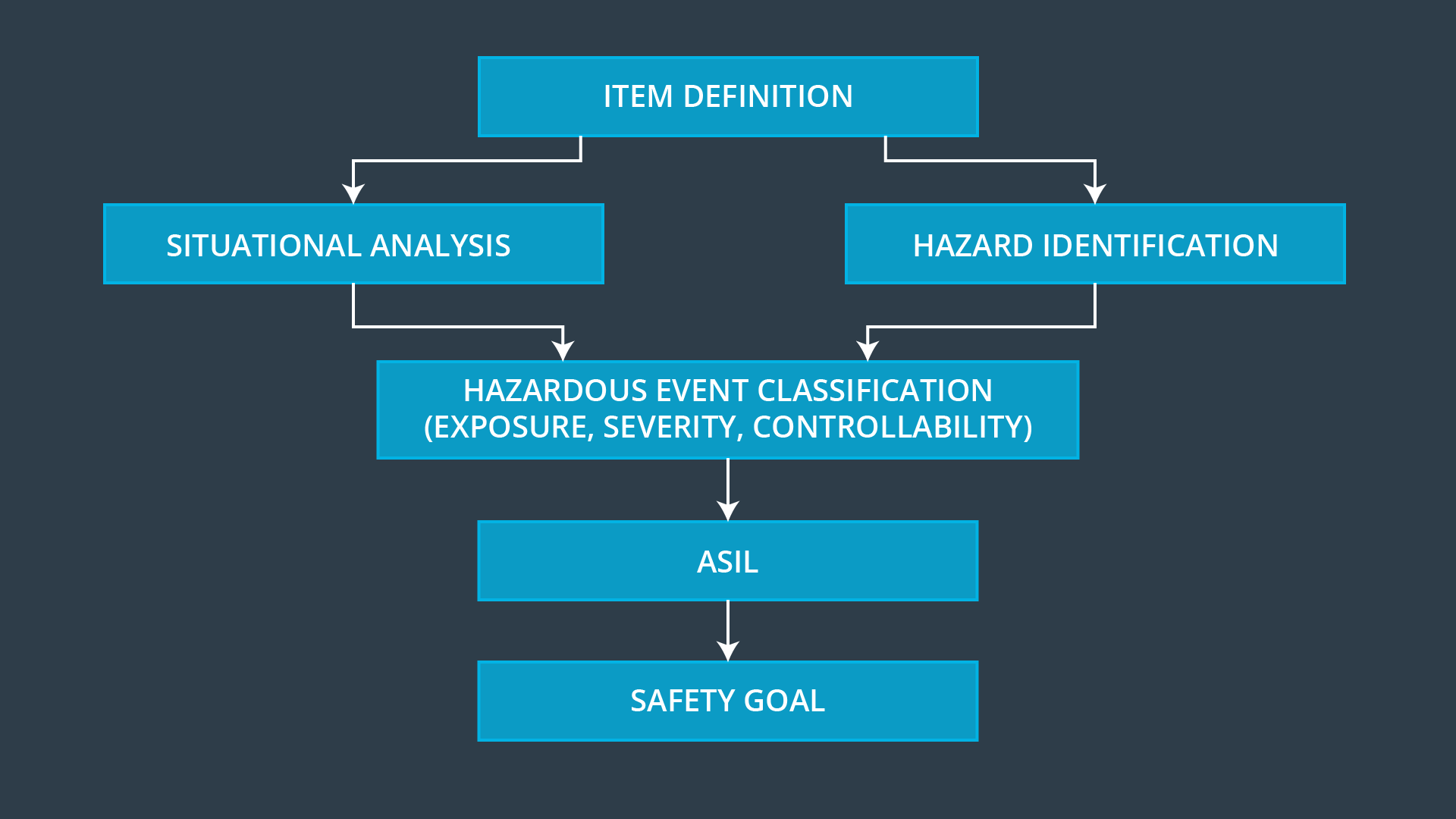01. Introduction
Introduction to the Lesson
L3 01 Introduction- Item Definition And HARA
Outline of the Hazard Analysis and Risk Assessment

Hazard Analysis and Risk Assessment Lesson Outline
Here is a description of the main parts of this lesson:
Item Definition
You will determine which vehicle system or systems are under consideration. The item definition describes which vehicle system is under consideration. Part of the definition includes the system boundaries clarifying what is inside versus outside the system.
Situational Analysis
In a situational analysis, you choose different driving scenarios like driving on a bumpy road, being towed, and driving on the freeway.
Hazard Identification
This is where you figure out what could go wrong with your system: in other words, how the system could malfunction. Remember that ISO 26262 only looks at electrical and electronic malfunctions. An electronic parking brake failure, for example, could be a potential malfunction.
Hazardous Event Classification According to Exposure, Severity and Controllability
You then combine situations and hazards together. Essentially, you take a malfunction and then think about the malfunction under different driving scenarios. Like if the electronic parking brake failed while the vehicle was parked on a steep hill.
You can then calculate three metrics called exposure, severity and controllability. The values for these three metrics will depend on the hazard, the driving scenario and what might happen when the hazard occurs under the scenario.
ASIL
After you have calculated exposure, severity and controllability, you can now determine the ASIL. There is a table to facilitate this calculation.
Safety Goal
Finally, you derive safety goals based on the hazard analysis and risk assessment. A safety goal is a type of engineering requirement specifically for vehicle functional safety; for example, "The electronic parking brake system shall always be engaged when the vehicle is in park on a gradient that is greater than 10 degrees".
Please note that HARA is subjective and different groups may define values differently based on their view of severity, occurrence, and exposure. This may result from geographical or cultural factors. For example in countries where the vast majority of automobile use is in well lit, urban, area, with low speed limits, headlights may not be considered safety critical.